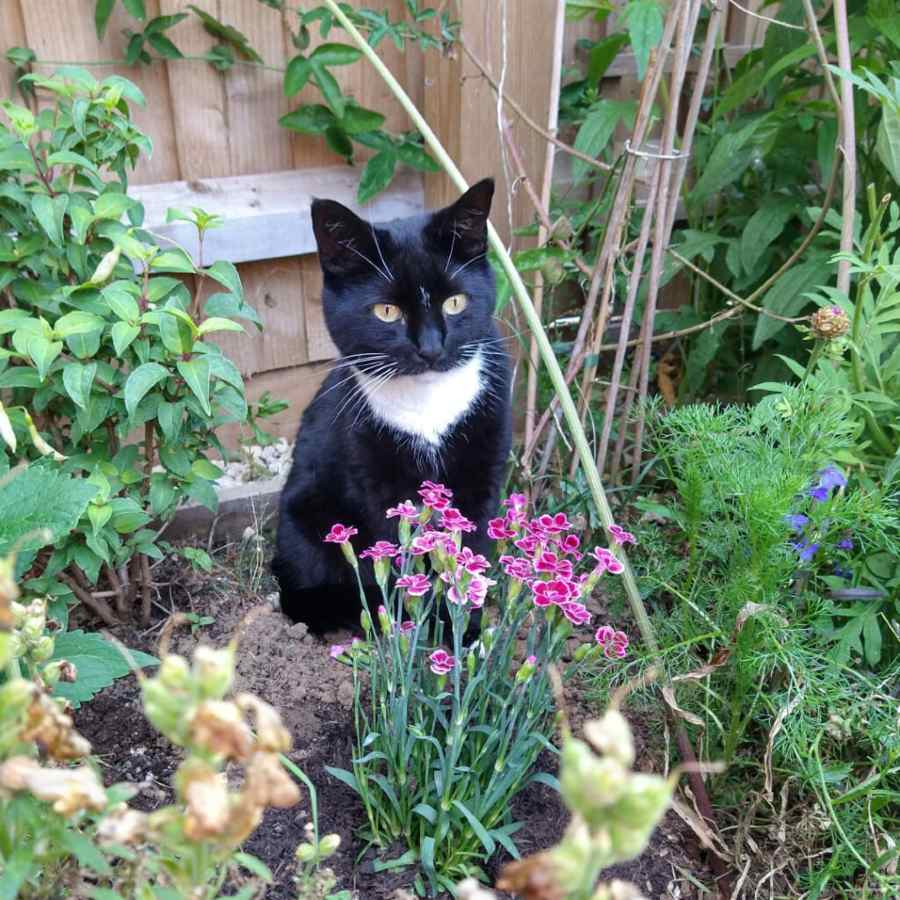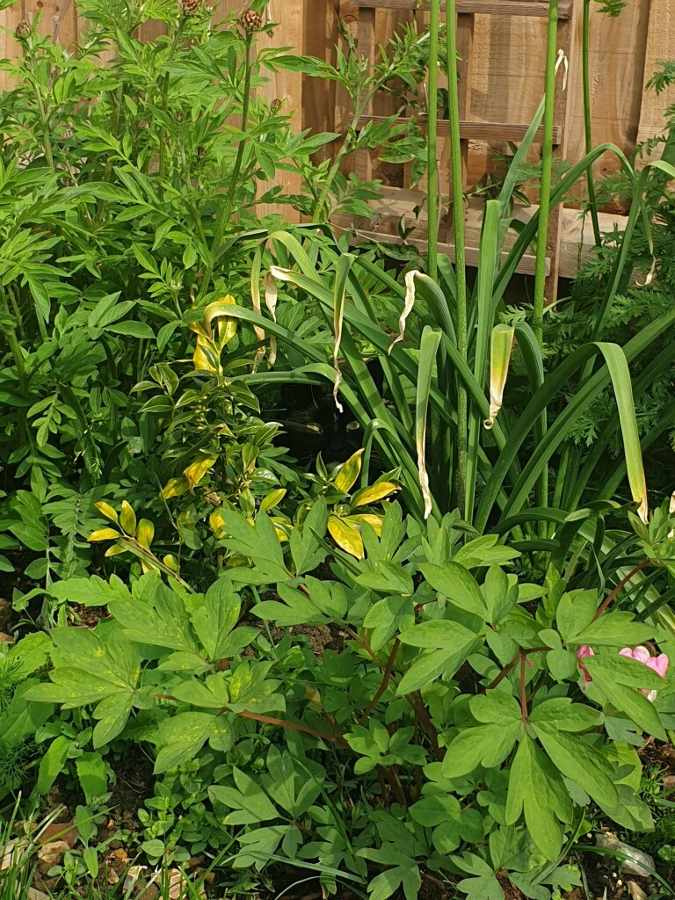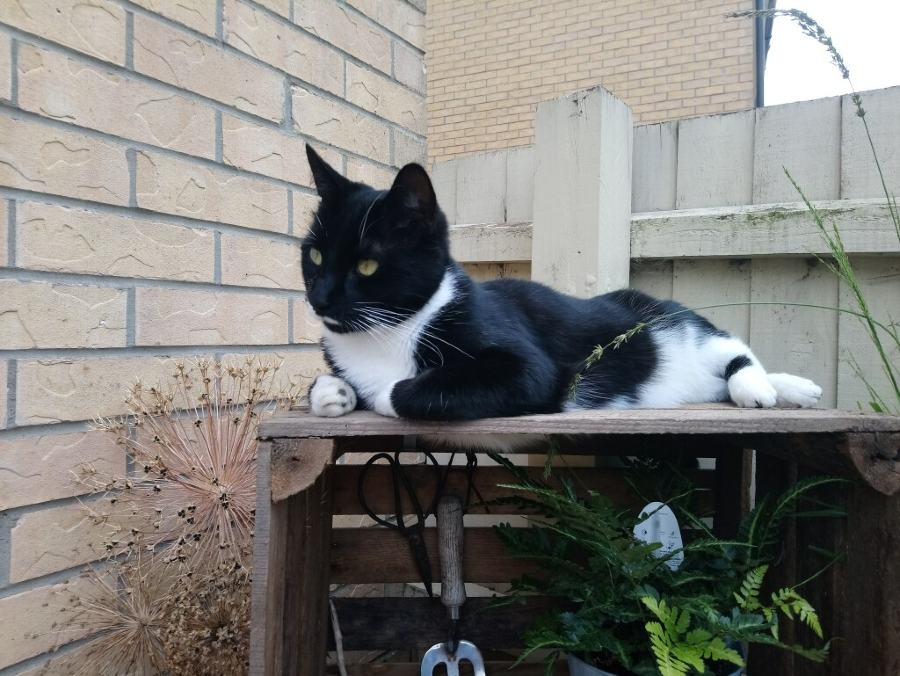
Most cats love to venture outdoors, enjoying climbing opportunities, look-out posts, sunny spots to snooze in, things to scratch, and other sensory experiences. If you’re lucky enough to have a garden, there are lots of things you can do to make it fun and enriching for your cat, addressing all of these feline needs and giving them a chance to express their natural behaviours. Ensuring that your garden makes your cat feel safe, secure and stimulated is great for their well-being, and may encourage them to stay closer to home. As well as giving some tips and advice on how to appeal to your cat’s wild side in this blog, we’ll also go through which garden plants are toxic to cats, as well as other potential garden hazards and how to avoid them.
1. Provide Things for Your Cat to Climb
If you have trees in your garden then as far as your cat is concerned, you have a ready-made playground! Trees with accessible branches are best, but if you don’t have space for trees, you could purchase an outdoor cat climbing frame, add a trellis to your fence, or prop a ladder against your shed.
It’s recommended that you cover the ground below with mulch to protect your cat if they fall while climbing. Avoid cocoa-based mulches though; these contain theobromine, which can be toxic to cats if ingested.
2. Create Scratching Opportunities with Logs or Tree Stumps
Cats love to scratch, not only because it keeps their claws in good condition, but because it’s also a way to mark their territory and help them feel secure in their environment.
Cats like to scratch both horizontally and vertically, so having a mixture of thick upright tree trunks or stumps and sturdy horizontal logs and branches in your cat-friendly garden is ideal.
3. Plant Evergreens to Create Year-round Hiding Spots

Cats tend to feel vulnerable in wide-open spaces, so hiding spots are really important in making sure they feel safe and protected. Planting sturdy evergreens and shrubs in your garden will create lots of enclosed spaces for your cat to hide in. Large plant pots and crates laid on their side are also great additions to your cat-friendly garden for this reason.
4. Create Look-out Spots for Your Cat

Cats like to perch high up to allow them to scan their environment and check for danger. To address this need, you can fix shelves to external walls or fences, stack crates in a corner, or add a table or bench to your cat-friendly garden. Placing a ladder against your garden shed or greenhouse is also a great way to give your cat a good vantage point.
Ideally your look-out spots should be close to the house, looking out onto the garden to give your cat the best view. It’s best if tables and benches have their backs to something like a fence or wall as this will make cats feel more secure.
Look-out spots and hiding places are particularly important when making your garden cat-friendly – if it’s irresistible to your own cat, it’s likely that others will venture in too. Having plenty of look-out spots and hiding places will help to make your cat feel safe in case there are any intruders. Hedging and high fencing can also help.
5. Provide Shelter for a Cosy Sleep
We all know how much cats love to snooze. When it’s warm out they’ll need little persuading to curl up in the sunshine for a catnap, but when it’s cold, wet or windy, cats appreciate some shelter. Adding a wooden box, fruit crate or purpose-built sheltered cat house with a blanket inside will encourage them to choose your garden as their favourite sleep spot.
6. Create an Outdoor Toilet for Your Cat
Encouraging your cat to go to the toilet in the garden is perfect if you’d rather not have to deal with an indoor litter tray. Cats prefer to go to the toilet far away from their food and water, so it suits them too.
Create a space in your cat-friendly garden that your cat can use as a toilet – an area containing woodchip, sand or loose earth are all good choices. Cats will appreciate a bit of privacy too, so surround it with a few plants and shrubs.
7. Give Your Cat Opportunities to Drink Water
Many owners struggle to get their cat to drink enough water. Providing outdoor water sources as well as indoor ones will help keep them hydrated, and many cats prefer more ‘natural’ sources of water.
Consider installing a cat water fountain, or gathering rain water for them to drink. Just make sure any rainwater you leave for them is fresh; don’t allow it to become stagnant or contaminated with slugs and snails.
8. Plant Cat-friendly Flowers for Sensory Stimulation
As well as being beautiful for us to look at, plants can offer plenty of stimulation and enrichment opportunities for our feline friends. Some of the best plants for cat-friendly gardens include:
Cat-friendly herbs
Some herbs can make great additions to a cat-friendly garden as they tend to have strong scents. Cats have a far better sense of smell than us, and stimulating it is a great way to provide enrichment. Sage is a good example of a cat-friendly herb that will stimulate your cat’s sense of smell.
Rosemary on the other hand, although not dangerous to cats, has a scent that tends to deter them.
Catnip
For around 50-70% of cats, catnip is thought to have an affect on mood and behaviour. It can stimulate their brains, resulting in playfulness and euphoria, or mellow them out. Catnip is perfectly safe for cats to nibble on, and most cats will stop eating it once they’ve had their fill, so it’s unlikely to cause digestive upset from overeating.
Catmint
Like catnip, catmint is a member of the mint family. Some owners have reported that their cat is similarly stimulated by catmint like they are with catnip. Catmint is generally considered a better garden plant from an aesthetic point of view than catnip, with its tidy shape and pretty purple flowers.
Honeysuckle
Honeysuckle also has similar properties to catnip, and it has been found to have stimulating and calming effects on many cats. This attractive plant also has beautiful brightly coloured flowers and a strong scent, which can stimulate your cat’s senses.
Valerian
Another plant that can elicit a similar response to catnip in cats, valerian also has the added benefit of attracting lots of pollinators. Not only will this support the bees and butterflies that visit your garden, but watching them fluttering around will provide plenty of entertainment for your cat!
Cat-safe grass
Many cats will regularly eat grass – the reason behind this behaviour is not fully understood, though it’s thought to support their digestion, and it also contains lots of nutrients like fibre and folic acid. It could even be that cats simply enjoy the taste and texture!
The best kinds of grass for cats include wheat, oat or barley grasses. Just make sure you don’t let them turn to seed as grass seeds can become embedded in your cat’s skin.
Other cat-friendly plants include:
- Buddleia
- Cornflower
- Cosmos
- Freesia
- Fuschia
- Hollyhock
- Jasmine
- Magnolia
- Pansy
- Petunia
- Rose
- Sunflower
- Violet
- Water lily
9. Don’t Plant Lilies or Other Toxic Plants for Cats
Lilies are very poisonous to cats and can cause serious kidney damage if ingested. While cats are not generally inclined to eat most plants other than grass, they could inadvertently brush past a lily plant and get pollen on their fur, and then ingest it while grooming. They might also be more likely to eat plants if grass is not readily available.
In addition to lilies, there are other plants that you should avoid planting to make sure your garden is cat-safe. Other plants that are considered toxic or dangerous to cats include:
- Foxgloves
- Crocuses
- Juniper
- Lily of the valley
- Oleander
- Daylily
- Daffodil
- Poppy
- Rhododendron
- Azalea
- Begonia
- Bluebell
- Tulips
- Clematis
- Geranium
- Hyacinth
- Iris
- Climbing lily
- Hydrangea
- Marigold
- Tomato plant
- Dhalia
- Snakeshead fritillary
- Periwinkle
- Water hemlock
- Yew
For a more extensive list of plants toxic to cats, see the Cats Protection list here. There is also a full list of plants that are generally considered safe for cats – although please note that the ingestion of any plant matter can result in gastrointestinal upset.
10. Avoid Using Chemicals in Your Gardening
Remember to be careful with insect repellents, weed killers, slug pellets and other garden products that may contact harmful chemicals. Many gardening products are toxic to cats and can cause serious harm if ingested. It’s always best to use natural repellents or make use of plants that naturally control bugs.
Contact your vet if you are concerned your cat has ingested anything dangerous, or call the Animal Poison Line on 01202 509000.
Wrapping Up
Incorporating these 10 things into your garden will help create a paradise for your feline friend! Stimulating their senses, offering hiding places and look-out spots, and encouraging natural behaviours like scratching and climbing will provide plenty of enrichment opportunities for your cat.
Additionally, sitting out in the garden with your cat while they explore their surroundings can be a great way to bond. This kind of low-intensity interaction is particularly good for cats who aren’t as keen on being petted. With plenty to explore and you there for company, your cat will be delighted with their amazing new playground!
